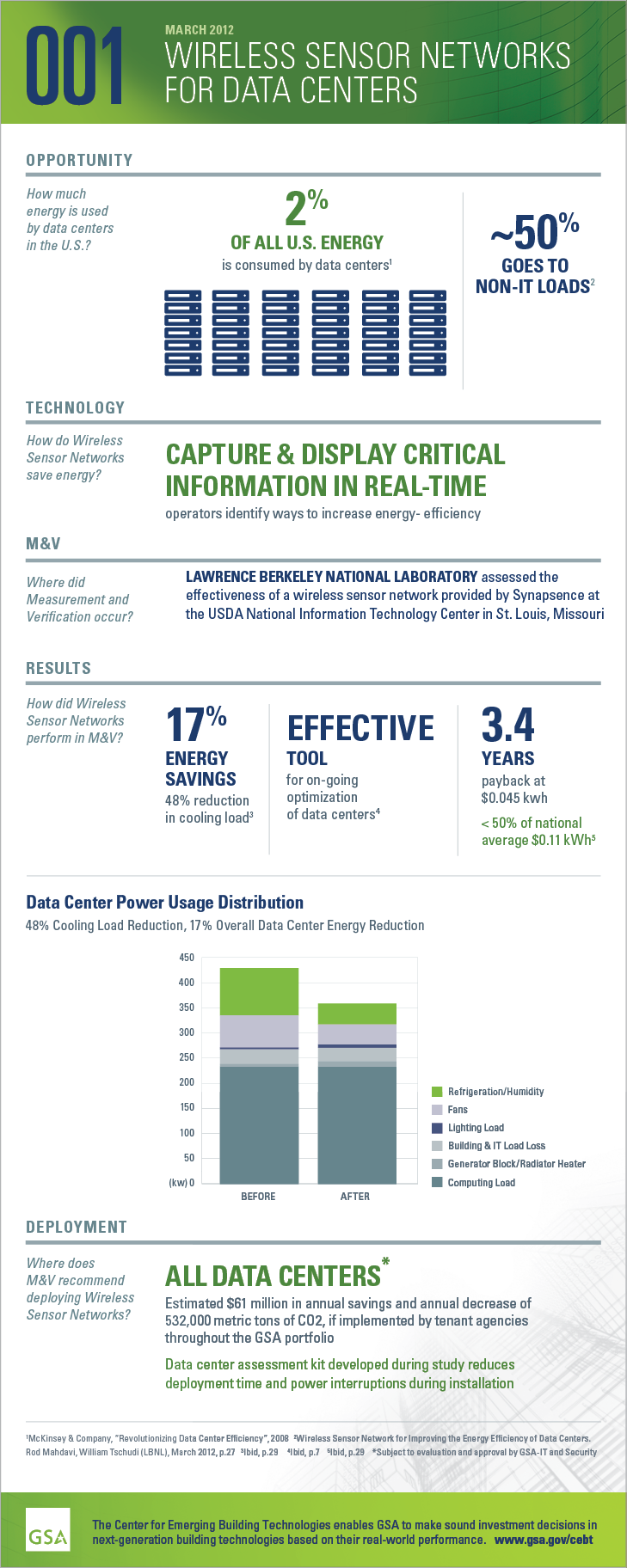Wireless Sensor Networks for Data Centers
Non-Information technology (IT) loads, such as lighting and fans, typically account for nearly 50% of data center energy consumption.
Using real-time information generated by a wireless sensor network, managers at a Department of Agriculture (USDA) data center in St. Louis, Missouri, were able to identify and implement changes in data center operations. These changes reduced non-IT cooling loads by 48% and overall power usage by 17%. Simple payback was 3.4 years. View full-size infographic. [PDF - 226 KB]
Reference above to any specific commercial product, process or service does not constitute or imply its endorsement, recommendation or favoring by the United States Government or any agency thereof.
Last updated: Jun 28, 2023
Top

 U.S. General Services Administration
U.S. General Services Administration
